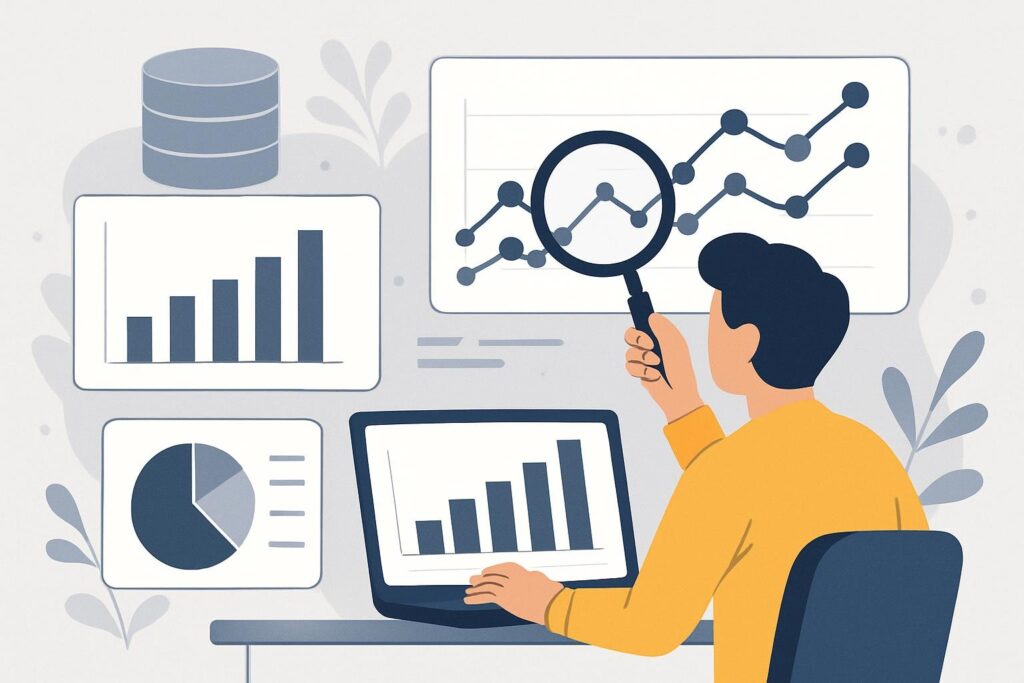Most consulting firms still rely on interviews, surface-level surveys, and managerial intuition to understand what drives (or blocks) performance in remote and hybrid teams. The result? Telework consulting that treats symptoms instead of causes.
Our agency takes a different route: we use scientifically validated organizational behavior instruments and statistical diagnostics to reveal what’s actually happening beneath the surface of teleworking systems. From employee motivation and leadership dynamics to cultural differences and collaboration patterns, what is influencing your team’s behavior?
How do we do this?
Step 1: Setting Goals through Telework Consulting
Every project starts with a consultation, not a sales pitch. We meet with the company’s leadership to define what they truly want to achieve:
- higher engagement in hybrid teams,
- improved cross-cultural collaboration,
- lower turnover among remote workers,
- better communication between distributed teams, or
- anything and everything that traditional management did not help.
This stage ensures the research is goal-aligned, not generic.

Step 2: Designing the Research
Based on those goals, we design a research structure that fits the organization’s size, culture, and context. Our diagnostics rely on validated organizational behavior instruments, combining long-established and newer models to ensure both scientific depth and modern relevance. Examples include:
- Organizational Commitment Questionnaire (Meyer & Allen, 1991) – measuring affective, continuance, and normative commitment.
- Job Satisfaction Survey (Spector, 1985) – exploring satisfaction dimensions such as supervision, communication, and nature of work.
- Leadership Behavior Description Questionnaire (Stogdill, 1963) – identifying leadership style tendencies.
- Cultural Dimensions Theory (Hofstede) – assessing the influence of national culture on management practices.
- Multifactor Leadership Questionnaire (MLQ 5X, Bass & Avolio, 1995 / revalidated 2021) – capturing transformational, transactional, and passive leadership behaviors, frequently used in hybrid and virtual-team contexts.
- Utrecht Work Engagement Scale (UWES-17 / UWES-9, Schaufeli et al., 2002 / 2019 revision) – assessing vigor, dedication, and absorption; particularly relevant for tracking engagement in remote employees.
- Psychological Safety Scale (Edmondson, 1999 / updated 2018) – measuring the extent to which employees feel safe to take interpersonal risks and express ideas in distributed teams.
- Work Design Questionnaire (WDQ, Morgeson & Humphrey, 2006) – evaluating task, knowledge, and social characteristics of work, useful for telework role redesign.
Each of these instruments includes validated items and dimensions with standardized scoring protocols. The combination allows us to build a statistically robust and contemporary behavioral map of the organization, one that merges classic theoretical grounding with data on how telework has transformed actual work dynamics.
Step 3: Collecting and Analyzing Data
We collect data anonymously and securely from all employees, ensuring authentic feedback. Then, using methods such as correlation analysis, regression modeling, and factor analysis, we turn those responses into actionable insights. For example:
- How does motivation by financial rewards influence actual performance?
- Does leadership style predict loyalty and turnover intention?
- How does power distance orientation shape management effectiveness in outsourcing teams?
These analyses give a quantified picture of organizational behavior, evidence, not intuition.

Step 4: From Data to Strategy
Once the analysis is complete, we present clear, data-backed strategies tailored to the organization’s objectives.
Instead of general advice, we deliver precise recommendations, supported by statistical significance and grounded in behavioral theory.
That’s how we turn academic rigor into a practical strategy.
Step 5: Implementation and Continuous Learning
Our collaboration doesn’t stop with the report. We help companies translate findings into behavioral interventions: leadership workshops, telework policy updates, motivation redesigns, or team culture programs.
We also offer follow-up diagnostics, so companies can track progress over time using the same scientific framework.
Why It Works?
Because teleworking success depends on understanding human systems, not just software. And human systems can’t be optimized by guesswork.
They require what we provide: data-driven insight, academic precision, and practical solutions that align science with business outcomes.
If your remote or hybrid company wants to make decisions based on evidence, not opinion, then diagnostics grounded in organizational science are the path forward.
Our agency brings together the worlds of research, statistics, and real-world telework management. Our team, led by dr Srdana Taborosi, is transforming data into strategy and strategy into sustainable organizational growth, making telework consulting more effective by applying science, not intuition.



Leave a Reply